May/June 2013 Rising Stars
This month, we conclude a multi-part APS series profiling Rising Stars in psychological science. The series, which began in the March issue of the Observer, highlights young luminaries in the field of psychological science.
Eliza Bliss-Moreau
Sabina Cehajic-Clancy
Jonathan S. Comer
Andres De Los Reyes
Paul W. Eastwick
Wolfgang Gaissmaier
Kurt Gray
Kristen M. Kennedy
Ethan Kross
Cristine H. Legare
Lisa M. Leslie
Jane Mendle
Aprajita Mohanty
Martin M. Monti
Mary C. Murphy
Derek Evan Nee
Masi Noor
Thomas M. Olino
Christopher Y. Olivola
Leah H. Somerville
R. Nathan Spreng
Benjamin C. Storm
Piercarlo Valdesolo
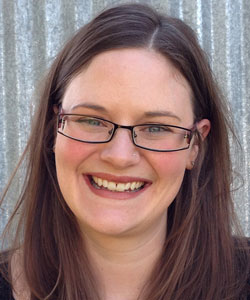
Eliza Bliss-Moreau
University of California, Davis
www.elizablissmoreau.com
What does your research focus on?
The goal of my research program is to understand the biological underpinnings of affect and emotion, with a particular focus on the mechanisms that generate individual differences. My core interest is to understand why there is such marked variety in people’s affective experiences — why some people love the taste of coffee and others hate it; why some people laugh at a joke while others scowl; why the same event can result in one person developing affect-related psychopathology yet leave another person relatively unscathed. My experimental approach is both multi-method and interdisciplinary. I use methods that include behavioral observations, social-cognitive reaction time tasks, neuroimaging, and psychophysiology in humans and nonhuman primates. My goal is to capitalize on the unique strengths of each model system to facilitate an understanding of how and why organisms differ in their affective responses. In humans, I model extant individual differences and study self-reports of affective experience. In nonhuman primates, I actually create individual differences by manipulating the brain or an animal’s social experiences.
What drew you to this line of research and why is it exciting to you?
My initial interest in affective science was cultivated through early research experiences as an undergraduate in the context of a broad liberal arts education. At the time, I was completing coursework in biology, psychology, and philosophy. I was intrigued by the core questions in affective science: they represented overlap between these three fields and were being examined experimentally in the laboratory. Those experiences led me to pursue graduate training in affective science and social psychology, during which time I developed an interest in neurobiology. I pursued postdoctoral training in behavioral neuroscience because I was drawn by the potential power of animal models for answering the core questions that drive my research program.
Who were/are your mentors or scientific influences?
Lisa Feldman Barrett has been my mentor for the duration of my academic training. She taught me how to think scientifically and cultivated in me a deep appreciation for psychological science and a regard for the scientific method. Her intellect, creativity, and tenacity are inspiring. Jim Russell has been instrumental in shaping my thinking about emotion and the scientific process more generally. Jim instilled in me a passion for precise and thoughtful experimentation. My research program would be untenable without mentorship that I have received from David Amaral. He took a risk accepting a social psychologist for training in nonhuman primate neuroscience, and I am very grateful that he did. Most recently, I have benefited from the mentorship of Brenda McCowan, a behavioral biologist. Brenda has been invaluable in shaping my thinking about the evolution of social communication and the structure of social networks.
What’s your future research agenda?
For the last few years, much of my research has focused on translating metrics of affective processing from the human literature for use with rhesus macaques so that the same phenomena can be examined in both species. I am now using such metrics to study the role of the amygdala and anterior cingulate cortex in affective processing. I plan to pursue an understanding of the function of specific brain regions, hopefully using new technology being developed by my colleagues that will allow us to temporarily turn on and turn off specific brain areas at will. In addition, I am developing a line of research involving experimental tests of whether social context shapes neuroanatomy or whether neuroanatomy influences who develops different types and numbers of social relationships. I also plan to re-cultivate my human research program aimed at studying how social context shapes affective experience.
What publication are you most proud of?
Bliss-Moreau, E., Bauman, M. D., & Amaral, D. G. (2011). Neonatal amygdala lesions result in globally blunted adult affect in adult rhesus macaques. Behavioral Neuroscience, 125, 848–858.
This is my first publication in nonhuman primate neuroscience that utilizes a metric translated from human studies of affect. It represents the first melding of my social psychological and my behavioral neuroscience training.

Sabina Cehajic-Clancy
Sarajevo School of Science and Technology, Bosnia and Herzegovina
www.ssst.edu.ba
What does your research focus on?
In my research, I am examining socio-psychological processes of sustainable intergroup reconciliation with a particular focus on a post-conflict society of Bosnia and Herzegovina. More specifically, using both qualitative and quantitative methodological approaches I examine the following questions: 1) antecedents of acknowledgment and acceptance of ingroup responsibility; 2) antecedents and consequences of collective emotions such as guilt and shame; 3) socio-psychological processes that might facilitate intergroup forgiveness; and 4) effects of apologies and reparation offers on various reconciliation indicators.
What drew you to this line of research and why is it exciting to you?
Coming from and living in a region marked by history of occupation, conflict, war but also co-existence, common heritage, culture, and experience of unity. I find my work very exciting as I research an important, relevant and highly applicable phenomena of how to come to terms with the past marked by collective violence and gross human right violations and at the same time pave the road towards sustainable reconciliation
Who were/are your mentors or scientific influences?
Professor Rupert Brown, the University of Sussex, UK; Emanuele Castano, the New School for Social Research, New York; Colin Leach, the University of Connecticut.
What’s your future research agenda?
To continue with the same level of excitement with the current research agenda; create and implement more applied research projects here in Bosnia and Herzegovina; and involve more young scholars from the region. In terms of the research question, I would love to examine the antecedents of victimized identity as an important obstructive element towards reconciliation.
What publication are you most proud of?
Čehajić, S., Effron. D., Halperin, E., Liberman, V., & Ross, L. (2011). Affirmation, acknowledgment of ingroup responsibility, group-based guilt, and support for reparative measures. Journal of Personality and Social Psychology, 101, 256–270.
Today I work at the (first) private university in Bosnia and Herzegovina — Sarajevo School of Science and Technology — teaching political psychology in the Department of Political Science and International Relations. I am also very proud to announce that we will be launching a first in the region: an interdisciplinary, and internationally accredited, Master’s program in Conflict Analysis and Reconciliation.
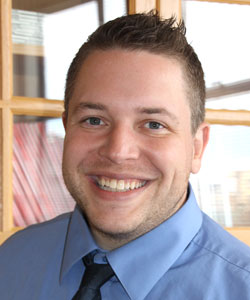 Jonathan S. Comer
Jonathan S. Comer
Director, Early Childhood Interventions Program
Boston University
www.bu.edu/card/profile/jonathan-s-comer-ph-d
What does your research focus on?
Broadly speaking, my research examines the complex interplays among psychological, physiological, and socio-contextual aspects of childhood mental disorders and their treatments. In particular, my work focuses on the development of innovative methods for expanding the quality and accessibility of mental health care for early-onset disorders, placing central emphasis on the two most prevalent classes of youth disorders — anxiety disorders and disruptive behavior disorders — as well as the effects of disasters, war, and terrorism. To address shortages in the availability and accessibility of supported treatments, much of my research focuses on the use of new technologies for extending the scope and reach of supported interventions.
What drew you to this line of research and why is it exciting to you?
Children’s mental illness imposes a staggering public health burden. Despite recent advances in the identification of evidence-based psychological interventions, considerable gaps persist between treatment in experimental settings and services available in the community. Inadequate numbers of mental health professionals, particularly in remote regions, impinge on the availability of care, and current mental health delivery models fail to reach adequate numbers of affected children. Despite this state of affairs, I believe technological innovations offer a promising vehicle for overcoming traditional barriers to care. In recent years, rapidly developing computer technology, the broadening availability of the Internet, and increasingly sophisticated capacities for live broadcasting via affordable webcams have already transformed many aspects of our daily lives. In mental health care — a discipline that relies primarily on verbal communication and visual observation — I’m excited by the possibility that innovative telemethods can extend the availability of services by addressing regional workforce shortages in care. Children living in regions with insufficient mental health care availability can participate in real-time interactive treatment with a provider, regardless of geographic proximity to a mental health facility.
Who were/are your mentors or scientific influences?
I have been extraordinarily lucky to have worked with some of the true mentoring treasures of clinical science. I completed my doctoral training with Philip Kendall. In addition to his contagious enthusiasm for science, his tremendous record of accomplishments, and his approachability, he has a terrific gift for engaging students in casual conversation about the large issues and then helping students reframe their ideas in terms of testable empirical questions. I still consult with him on anything I can. On post doc, I worked with Anne Marie Albano — an amazing professional advocate who always modeled how much fun being a clinical scientist and doing meaningful collaborative work can be — and with Mark Olfson, who taught me how to approach questions from a public health perspective. In working with him I learned to think more critically and with more clarity. To this day, every conversation I have with him is intellectually stimulating. Finally, as a junior faculty member, I have been extraordinarily lucky to receive continued mentorship from David Barlow. In addition to his unwavering support of my professional development, our field has no greater ambassador of clinical science for young professionals. Given his unparalleled perspective on the field, I’ve learned so much having the opportunity to think critically with him about clinical science and the state of our field, and to collaborate on papers together.
What’s your future research agenda?
Under the influence of the Patient Protection and Affordable Care Act, it is envisioned that mental health care will be increasingly integrated into primary care settings. I’m very interested in how innovative technologies can be used to facilitate the co-location of mental health care and primary care, and how such technologies can optimize the accessibility and quality of mental health care for all children, regardless of geography or income.
What publication are you most proud of?
Comer, J. S., Mojtabai, R., & Olfson, M. (2011). National trends in the antipsychotic treatment of psychiatric outpatients with anxiety disorders. American Journal of Psychiatry, 168, 1057–1065.
In this paper, I documented that antipsychotic medications are becoming increasingly prescribed off-label to patients with anxiety disorders (currently one in five visits for an anxiety disorder results in an antipsychotic prescription), even though we know very little about their effectiveness and safety in treating anxiety disorders. The potential adverse effects of antipsychotics — including metabolic, endocrine, and cerebrovascular risks — have been well documented. I see this epidemiologic analysis as setting the context for much of my work expanding the reach of psychological treatments — limitations in the availability of supported psychological treatments place heavy clinical demands on the pharmacologic dimensions of mental health care. Findings like these really bring a renewed sense of urgency to efforts to improve access to psychological treatments.
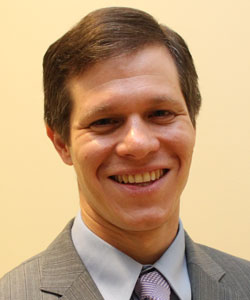 Andres De Los Reyes
Andres De Los Reyes
University of Maryland College Park
https://sites.google.com/site/caipumaryland/Home/people/director
What does your research focus on?
When assessing patients for mental health concerns, clinicians and researchers often have to take information from multiple sources or informants to make health care decisions, such as assigning diagnoses and planning treatment. This process results in generating a great deal of information about a patient’s mental health, but the individual pieces of information often yield inconsistent conclusions. These inconsistencies create considerable uncertainty as to how best to care for patients. My research seeks to understand why mental health assessments often yield these inconsistent conclusions. Interestingly, commonly used informants of child and adolescent mental health, such as parents and teachers, often vary in where they observe children and adolescents, such as home and school settings. When assessing adult patients, self-reports and clinician reports might similarly differ in that patients base their reports on how they behave in work and home settings, and clinicians may take this information into account but also focus on how the patient behaves in the clinic setting. Thus, informants differ in their opportunities for observing mental health concerns. With an emphasis on adolescent social anxiety, my laboratory’s work focuses on identifying the circumstances in which inconsistencies in assessment outcomes reveal important information on the specific contexts in which patients express mental health concerns, and risk factors for these concerns. A greater understanding of the specific contexts (e.g., home, work or school, peer interactions) within which patients express mental health concerns may inform the development of methods for using this contextual information to personalize treatments for patients, and thus improve the efficacy of these treatments.
What drew you to this line of research and why is it exciting to you?
I began developing my research interests as an undergraduate research assistant at Florida International University, and I carried these interests into graduate school at Yale University. When I was in graduate school, I remember reading studies on these topics and to my amazement, I made three observations. First, these discrepancies among informants’ reports were some of the most robust findings in clinical research. Second, no conceptual framework existed to explain why these discrepancies exist. Third, I noticed that researchers had been publishing on these topics for decades. The general pattern I observed was a given researcher or research team publishing a handful of papers on these topics, and then abruptly stopping their work on these topics. Thus, the lack of knowledge on mechanisms of informant discrepancies, as well as the lack of sustained efforts to address these topics, really caught my attention. Along the way, perhaps the most valuable lesson I have learned is that great science involves a careful triangulation of your intrinsic excitement about what you study, the importance of the topics you address, and a strong sense that if you do not carry out your research program, no one else will.
Who were/are your mentors or scientific influences?
Much of what our laboratory has accomplished could not have been carried out without the guidance and support of many brilliant scientists. I learned that I wanted to pursue a research career from the mentorship of Wendy Silverman and her students, namely Steven Berman, Armando Pina, Lissette Saavedra, and Claudio Ortiz. In graduate school, Alan Kazdin and Mitch Prinstein taught me to think like a scientist. Many colleagues at the University of Maryland, College Park (UMCP), have provided an endless amount of support and taught me much about how to train my own students, including Carl Lejuez, Jack Blanchard, Michele Gelfand, Laura MacPherson, Andrea Chronis-Tuscano, Tom Wallsten, Luiz Pessoa, and Karen O’Brien. I also have a network of colleagues outside of UMCP who make our laboratory’s work possible. This is a fairly expansive network that includes Kimberly Goodman, Matthew Nock, Deborah Beidel, Candice Alfano, Eric Youngstrom, Mo Wang, Amelia Aldao, and Jessecae Marsh.
What’s your future research agenda?
Currently, I find clinical psychology to be headed in exciting directions with the advent of the research domain criteria or RDoC. The RDoC is a research initiative recently launched by the National Institute of Mental Health that represents a shift away from understanding mental illness from a categorical, diagnostic perspective. Instead, RDoC emphasizes dimensional perspectives on mental illness that seek to illuminate processes or pathways to mental illness. The hope is that research guided by RDoC will equip clinical psychologists with knowledge on the “active ingredients” or specific mechanisms of mental illness. If successful, the result will be the development of more potent, effective therapies targeting these mechanisms of mental illness. However, a key challenge with translating this work into improvements in patient care is that the RDoC approach emphasizes understanding mental illness from the perspective of measurement units for which clinical psychologists rarely implement in clinic settings, such as methods for directly assessing cardiovascular and brain functioning. To this end, our laboratory is working toward developing clinical assessment paradigms that effectively integrate these measurements within applied research and clinic settings.
What publication are you most proud of?
De Los Reyes, A., Thomas, S. A., Goodman, K. L., & Kundey, S. M. A. (2013). Principles underlying the use of multiple informants’ reports. Annual Review of Clinical Psychology, 9. Advance online publication. doi: 10.1146/annurev-clinpsy-050212-185617
I am most proud of a paper our laboratory just published, representing the culmination of a decade’s worth of research and theory on use of multi-informant assessment approaches in clinical psychology. I began work on this paper in graduate school. Thankfully, initial versions of the paper were rejected for publication. Over time, colleagues with whom I very much enjoy collaborating joined me on this paper’s journey to publication. My colleagues (and of course, the notices of rejection I received from journals!) forced me to think deeply, collect more data, and improve upon the theoretical framework elaborated upon in the paper. We designed the theoretical framework described in the paper to give researchers and practitioners a guide for planning for inconsistencies among informants’ reports in both research and practice settings, along with a rubric for interpreting these inconsistencies when they arise. Basically, the goal of our lab is to reduce the uncertainty that mental health care professionals encounter when they ask multiple informants the same questions, but they get different responses depending on who they ask. My hope is that with this paper, we have paved the road that leads us to our goal.
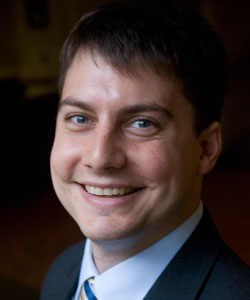 Paul W. Eastwick
Paul W. Eastwick
The University of Texas at Austin
www.pauleastwick.com
What does your research focus on?
Broadly speaking, my research investigates how people initiate romantic relationships and how they remain committed and attached to their partners. At this point, I have two primary lines of research. The first examines how people’s ideal partner preferences (i.e., the qualities that they rate as critically important in a romantic partner) affect their feelings and judgments about potential or actual partners. This work has used a variety of methods (e.g., confederate interactions, implicit measures, speed-dating, longitudinal designs) to document how people’s romantic evaluations shift depending on whether they are considering a hypothetical target, a face-to-face interaction partner, or an established relationship partner. The second explores the adaptive functions of attachment bonds: When do strong romantic attachments emerge, and how do they reflect the specific selection pressures encountered by our hominid ancestors? For example, my colleagues and I have examined a) how the experience of anxiety in fledgling relationships is associated with attachment bond formation, and b) how attachment bonds in established relationships intersect with ovulatory shifts in women’s desire for sexual intimacy with their partners.
What drew you to this line of research and why is it exciting to you?
I have always marveled at the process by which two strangers become romantic partners. Although humans form millions of new relationships every day, it is an incredibly low probability event if you consider the vast sea of possible romantic pairings. The fact that we can use science to understand this process was an incredible discovery for me as an undergraduate; we do not have to attribute it all to providence and fate!
Who were/are your mentors or scientific influences?
My primary advisor in graduate school was Alice Eagly; I learned a great deal from her about how to be your own toughest critic in order to build a strong, programmatic, and persuasive line of research. Also, I was very fortunate that Eli Finkel arrived at Northwestern as an assistant professor the same year that I arrived as a graduate student. Our research interests grew together over the years and I expect that our collaboration will remain productive well into the future. In terms of scientific influences, Cindy Hazan’s Human Bonding class left an indelible impression on me as an undergraduate, and her writings have continued to inspire me over the years. Also, I always travel with my dog-eared copy of Gangestad and Simpson (2000); this paper and the associated commentaries have generated countless research ideas for me. Finally, Lisa Neff has taught me a great deal about strong writing — how to select every word so that the page conveys exactly the meaning that you intend. Deliberate, precise writing is a key component of how we change minds, and no one is better at this than Lisa.
What’s your future research agenda?
I consider myself to be both a relationship researcher and an evolutionary psychologist, and I hope that my work will identify novel areas of intersection between these two (partially overlapping) fields. For example, I am especially excited about a program of research that imports the classic evolutionary psychological concept of “mate value” into paradigms used by relationships researchers. In general, I think that both fields have a lot to learn from each other, and I hope to contribute in a small way to their synthesis.
What publication are you most proud of?
Eastwick, P. W., Luchies, L. B., Finkel, E. J, & Hunt, L. L. (in press). The predictive validity of ideal partner preferences: A review and meta-analysis. Psychological Bulletin.
I’m proud of this paper for two reasons. The first is that it represents the culmination of a set of ideas that began about 10 years ago, just as I was entering graduate school. I feel very fortunate that I had the resources and mentors that helped me to grow these ideas into a complete program of research. The second is that the meta-analysis half of this paper was an awe-inspiring collaborative effort; approximately 40 independent teams of researchers analyzed their unpublished data for us. Some of them went so far as to dig up their 20-year-old undergraduate theses from storage! What a field.
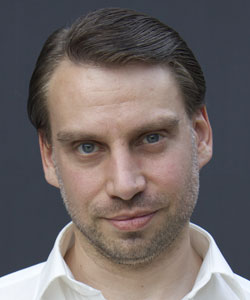
Wolfgang Gaissmaier
Max Planck Institute for Human Development, Harding Center for Risk Literacy, Germany
www.mpib-berlin.mpg.de/en/staff/wolfgang-gaissmaier
What does your research focus on?
Broadly speaking, I study how people make decisions under risk and uncertainty. How do people perceive and interpret risk and uncertainty? How do they actually make decisions given that they have limited time and limited cognitive capacities? And how could they make better, more informed decisions? To address these questions, I take on a cognitive-ecological perspective, which sees decision making as an interaction between the human mind and its core cognitive capacities on the one hand, and the structure of the physical and social environment on the other. My work spans from basic research to actual applications, the latter focusing primarily on the health sector. It builds on a combination of laboratory experiments, cognitive modeling, and simulation, as well as surveys and field studies.
What drew you to this line of research and why is it exciting to you?
In the beginning, I think it was simply a social heuristic that drew me to this line of research: If you see people who are really enthusiastic about the topic they are studying, consider this topic to be interesting. Gerd Gigerenzer is such an enthusiastic person, and when we first met at a seminar on decision making he was organizing at the Free University Berlin, it became very clear to me soon that I wanted to work with him on such topics for my dissertation. Of course I still needed to convince him as well. Now we have been working together for more than a decade. What I love about this line of research is that it is about real issues that concern every one of us very closely. It deals with the big questions, such as rationality, but also with very practical things, such as how people make decisions about their health. It intersects with many other disciplines, such as economics, medicine, biology, and so forth. And it is something that I can explain to my grandmother.
Who were/are your mentors or scientific influences?
This would clearly be my doctoral advisors Gerd Gigerenzer and Lael Schooler. I would not be where I am and who I am without them. They have become much more like family to me rather than being ‘just’ colleagues, and I still seek their advice in important questions. Among the many things they have taught me, probably the most important one is to ask the right questions at each point in a research project: Why is this an interesting research question in the first place? Can we explain it to an outsider? Is there a theory in shooting distance? Why would a reader continue reading the article at this point?
What’s your future research agenda?
I’d like to continue working out a comprehensive framework of decision making under risk and uncertainty, which includes models of risk perception and communication, decision strategies, and the environment (primarily regarding its social and institutional aspects). Moreover, I’ll further the applications of my research in the health domain to real-world settings, including medical education and schools. Finally, I want to expand the areas of application of my work to other risky domains, such as financial and environmental decision making. In both of those fields there is a need for better risk communication and better decisions.
What publication are you most proud of?
Gigerenzer, G., Gaissmaier, W., Kurz-Milcke, E., Schwartz, L. M., & Woloshin, S. (2007). Helping doctors and patients make sense of health statistics. Psychological Science in the Public Interest, 8, 53–96.
It may not be strategically smart to name a publication on which I am not the first author, but this paper is probably the best and most influential article that I have had the honor to contribute to. It is both broad and deep; does not only discuss the understanding of risk from a psychological perspective, but also deals with educational opportunities and challenges, institutional obstacles, and historical origins. What makes me particularly happy about this article is that many people who do not do research in this area told us how useful it was for them, personally.
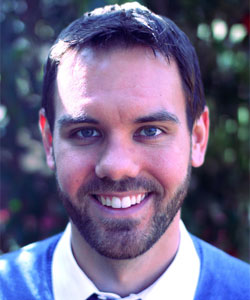
Kurt Gray
University of North Carolina at Chapel Hill
www.mpmlab.org
What does your research focus on?
I study 1) how people perceive the minds of others 2) how people make moral judgments and 3) the link between these two processes. My research suggests that mind is perceived along the two dimensions of agency (intentional action) and experience (pain/pleasure), and that these two dimensions form the essence of moral judgment. All moral acts — no matter how they appear — are understood through a prototype of harm, consisting of a dyad of an intentional agent and a suffering patient. This dyadic prototype can help explain why people punish heroes, why victims escape blame, and why good deeds make people physically stronger. I also research the creepiness of humanoid robots, perceptions of vegetative patients, and the nature of objectification.
What drew you to this line of research and why is it exciting to you?
I research mind perception and morality because they are both ultimately subjective. There is no objective truth about whether someone deserves moral rights or responsibility, and no way of knowing whether someone really has mind. Both mind and morality are about perception — they are things that we perceive into existence.
Who were/are your mentors or scientific influences?
I’m lucky to have had many wonderful mentors, including the faculty at the University of Waterloo, Wendy Mendes and Josh Greene at Harvard, Arie Kruglanski and Michele Gelfand at the University of Maryland, and Barb Fredrickson and Keith Payne at the University of North Carolina. Lisa Barrett and Kristen Lindquist have both also shaped my scientific thinking, as have my amazing co-authors and friends from the field. Most of all, I’m grateful to my advisor, Dan Wegner. He gave me his love of big theory, fun studies, and odd topics. If I am even half as creative and productive as Dan, I’ll consider my career wildly successful.
What’s your future research agenda?
My lab is currently investigating the psychological power of distant evil, the aversion to human evolution, the allure of conspiracy theories, the structure of God, the psychology of paradox, and the immortality of morality.
What publication are you most proud of?
Gray, K., Young, L., Waytz, A. (2012). Mind perception is the essence of morality. Psychological Inquiry, 23, 101–124.
Arguing against the fragmentation of morality into distinct domains, my co-authors and I suggest that morality is unified by mind perception. What makes this paper especially memorable for me is the wide range of insightful commentaries that accompany it.
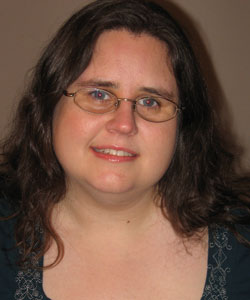
Kristen M. Kennedy
The University of Texas at Dallas
http://bbs.utdallas.edu/people/detail.php5?i=1061
What does your research focus on?
I am most generally interested in brain-behavior relationships as we age, or the cognitive neuroscience of aging. Specifically, I study how changes to the brain’s structure with age correspond to the changes we see in cognition as we age. Interestingly, there is not a one-to-one relationship in this process because our brains are malleable to cope with the biological effects of aging, and our cognitive strategies may also re-arrange to cope with decrements to brain structure. My research focuses on how these processes are related in the course of normal aging and how we build upon our strengths as we age.
What drew you to this line of research and why is it exciting to you?
I was broadly interested in psychology in college and then while studying for a master’s in clinical neuropsychology, I realized that it was the workings of the human brain that I was most interested in pursuing as a research focus. As people are now living to be older and older, it seemed like an exciting opportunity to study how our neural and cognitive abilities could keep pace with this extended lifespan. It is very rewarding research to study the factors that influence the aging of the brain and how they, in part, determine how well we are able to age cognitively.
Who were/are your mentors or scientific influences?
I have been very fortunate to have great teachers and mentors from the very beginning of my academic training. My undergraduate psychology professors at Hendrix College (namely Drs. Chris Spatz, Ralph McKenna, and Tim Maxwell) are some of the best teachers from whom I have had the privilege of learning. Honing my critical thinking skills at a small liberal arts college had an enormous influence on my scientific development, even before I had narrowed down my research focus.
My graduate advisor at Wayne State University, Dr. Naftali Raz, was enormously influential in shaping my scientific thinking and method development. His unwavering rigor in his approach to conducting science will always be my model. He is one of those extraordinary people that just being around them imparts knowledge. I hope that my students can learn as much from me as I did from him.
Finally, it was my postdoctoral mentor, Dr. Denise Park, who helped me integrate all the parts necessary to be a successful, well-rounded scientist. She is one of those rare people who really gets the “big picture” of science, from funding to article publication. Working with her allowed me to integrate a bigger picture view into my day-to-day life, and her training in navigating the world of grant writing and funding was invaluable.
What’s your future research agenda?
I am currently funded for the next three years by a K99/R00 grant from the National Institute on Aging, to investigate the role of brain structure in explaining brain function differences we observe in the course of normal aging. Specifically, this research involves investigating the role of white matter in the reorganization of age-related brain function using structural and functional imaging techniques. Ultimately, I am interested in understanding how the brain changes with age, both adaptively, and detrimentally, and how this knowledge might be used to stave off cognitive decline. My current projects are focused on combining diffusion tensor imaging, to measure the integrity of the white matter connections in the brain, with functional MRI, to explore the neural correlates of age-related alterations in brain activity we see regularly in neuroimaging studies. An ultimate goal of these projects is to determine if these alterations are facilitative or detrimental to cognitive performance.
What publication are you most proud of?
Kennedy, K. M., Rodrigue, K. M., Devous, M. D., Sr., Hebrank, A. C., Bischof, G. N., & Park, D. C. (2012). Effects of beta-amyloid accumulation on neural function during encoding across the adult lifespan. NeuroImage, 62, 1–8.
I chose this publication because it represents the work of a large team of people; I am proud and excited to have been able to coordinate with a team of great researchers, and to integrate different neuroimaging techniques to answer an important question about how biomarkers of neural health impact our neural function across the lifespan.
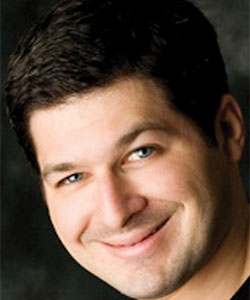 Ethan Kross
Ethan Kross
University of Michigan
http://selfcontrol.psych.lsa.umich.edu
What does your research focus on?
Although the emotions we experience usually serve an adaptive function, sometimes they take hold of us in ways that are harmful, interfering with how we ideally want to think, feel, and behave. These are the situations that fascinate me. My research aims to illuminate how people can effectively control their emotions under such circumstances.
What drew you to this line of research and why is it exciting to you?
When I was an undergraduate, I learned about a paradox in the literature on self-reflection and coping. Whereas many studies indicated that it was helpful for people to “work through” their negative experiences, other studies indicated that people’s attempts to do this often led them to ruminate and feel worse. Putting these findings together, the challenge that emerged was to understand how people can reflect on negative experience adaptively. This basic question triggered my broader interest in self-control.
Who were/are your mentors or scientific influences?
As an undergraduate, my conversations with Robert DeRubeis, David Williams, and Marty Seligman at University of Pennsylvania helped me discover my passion for psychology.
I met my two greatest influences at Columbia, where I earned my PhD. Walter Mischel took me under his wing when I arrived. He was, and continues to be, all that I could have hoped for in a mentor. From day one he encouraged me to ask “big questions” that have the potential to change the way we think about phenomena. The “question” always mattered most to Walter. To the extent that using tools from different level of analysis was useful for understanding one’s question, Walter fearlessly embraced doing so as I do now as well.
My other greatest influence was Ozlem Ayduk. Ozlem was completing the final year of her post doc when I started graduate school. We immediately began working together when I arrived, and we haven’t stopped. We think about problems just differently enough to make our partnership profitable (and a lot of fun). Ozlem taught me about the ins and outs of performing research and working in academia. She’s been my role model from the beginning.
I was fortunate to work with several other people at Columbia, including Geraldine Downey, Kevin Ochsner, Ed Smith, Tor Wager, Rudy Mendoza Denton and Tory Higgins. Each of them, in his or her own way, powerfully shaped the way I think about research.
Fortunately, mentoring doesn’t end when you leave graduate school. My current colleagues and collaborators continue to influence my thinking. In this regard, John Jonides, Oscar Ybarra, Phoebe Ellsworth, Shinobu Kitayama, Dick Nisbett, Norbert Schwarz, Patty Deldin, Jason Moser, Stephanie Carlson, Rudy Mendoza Denton and Angela Duckworth have been particularly influential. My students have also been a tremendous source of stimulation.
What’s your future research agenda?
We still have a lot to learn about the basic mechanisms that underlie self-control, how those mechanisms develop, and how knowledge of them can be used to enhance self-control in daily life. My students and I are also exploring whether online social networks can be harnessed to facilitate self-control. I’m also curious about how to insulate people against the myriad biases that characterize human reasoning.
What publication are you most proud of?
Kross, E., & Ayduk, O. (2011). Making meaning out of negative experiences by self-distancing. Current Directions in Psychological Science, 20, 187–191.
This paper summarizes about 10 years of research that Ozlem Ayduk and I (along with others) performed to shed light on the mechanisms that distinguish adaptive versus maladaptive forms of self-reflection. Working on the paper was fun because it provided us with an opportunity to step back and think about what we had learned about this issue, and what questions remained unanswered.
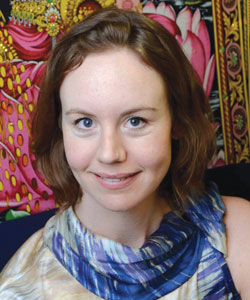 Cristine H. Legare
Cristine H. Legare
Director of the Cognition, Culture, and Development Lab
The University of Texas at Austin
www.ccdlab.net
What does your research focus on?
My work reflects my commitment to interdisciplinary approaches to the study of cognitive development. My research program draws upon diverse theoretical and methodological insights from cognitive science, cultural psychology, cognitive anthropology, and education science, to examine the cognitive foundations of cultural learning. I have conducted extensive research in southern Africa, and am currently doing research in Brazil, China, Vanuatu (a Melanesian archipelago), and the United States.
What drew you to this line of research and why is it exciting to you?
The interplay of the universal human mind and the variation of human culture motivate my research program and spark my curiosity. Examining how our shared cognitive system facilitates our capacity to use cultural tools, to engage in cultural innovation, and also to become members of diverse cultural communities elucidates fundamental questions about the evolution of human social cognition.
Who were/are your mentors or scientific influences?
My undergraduate training in human development at the University of California, San Diego, was highly interdisciplinary and included coursework in cognitive science, cognitive anthropology, and cultural studies. I was profoundly influenced by theory in cultural psychology and cognitive anthropology. Research by Lev Vygotsky, Alexander Luria, Jean Lave, Sylvia Scribner, Jerome Bruner, Michael Cole, Barbara Rogoff, Patricia Greenfield, Tanya Luhrmann, Douglas Medin, Dan Sperber, Paul Rozin, Pascal Boyer, Rita Astuti, Richard Shweder, Celia Heyes, and Michael Tomasello has had a lasting impact on my intellectual interests. My undergraduate mentors, Gail Heyman and Sonja Baumer, introduced me to experimental methodology and research on social cognition, inspiring me to pursue a career in psychological research.
In graduate school, I participated in the Culture and Cognition Program while completing my PhD in developmental psychology at the University of Michigan. I am deeply grateful to my graduate advisor, Susan Gelman, for her exceptional mentorship and brilliant theoretical insight. My interest in reasoning about causality, an intellectual preoccupation of mine that underpins all of my research interests, was inspired by Henry Wellman, Alison Gopnik, Maureen Callanan, and Frank Keil. My collaboration with Harvey Whitehouse and Paul Harris has also had an invaluable influence on my current research on the evolution of social cognition.
What’s your future research agenda?
My future research agenda is to develop an innovative interdisciplinary, cross-cultural, and mixed-methodological approach for studying cultural transmission, a topic with far-reaching implications for understanding the interplay of cognition and culture in childhood. My goal is to develop an integrated cognitive developmental account of how children flexibly use imitative capacities as tools for cultural learning. To better understand how children navigate between different functions of imitation, I intend to examine how children determine when an event provides an opportunity for learning instrumental skills (based on physical causation) versus learning rituals (based on cultural convention). Understanding the development of rituals is integral to understanding key elements of social group behavior, including the achievement of coalitional goals, the experience of social ostracism, and how individuals negotiate social hierarchies.
What publication are you most proud of?
Legare, C. H. & Gelman, S. A. (2008). Bewitchment, biology, or both: The co-existence of natural and supernatural explanatory frameworks across development. Cognitive Science, 32, 607–642.
For my master’s thesis, I studied how individuals explain what causes AIDS in rural and urban South African populations (Legare & Gelman, 2008). This project represents my interest in using creative methodology to answer unorthodox, interdisciplinary research questions. I examined how the supernatural explanations (i.e. witchcraft) coexist with biological explanations in a context in which both traditional remedies (e.g., supernatural practices) and Western biomedical treatments are widely available. I found that supernatural and biological explanations provided distinct, complementary causal information. Witchcraft explanations were neither the result of ignorance nor replaced by biological explanations. Importantly, both biological and witchcraft explanations were used to explain precisely the same phenomena. Witchcraft explanations proved to be most common among adults, who were also most knowledgeable about biological causality. This research contributes to our understanding of how seemingly incompatible explanations coexist within individual minds across cultures and development. It supports the proposal that reasoning about supernatural phenomena is an enduring aspect of human cognition.
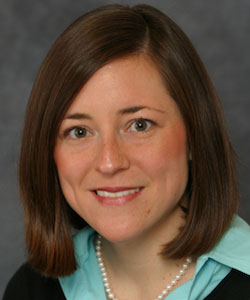 Lisa M. Leslie
Lisa M. Leslie
University of Minnesota
www.csom.umn.edu/faculty-research/lmleslie/Lisa_Leslie.aspx
What does your research focus on?
In my research, I use a social cognition perspective to understand issues related to diversity in organizations. More specifically, I am interested in people’s tendency to use social categories (e.g., gender, race, parental status) to form often erroneous perceptions and attributions about others and the self, and how to prevent such misattributions from marginalizing the career success of traditionally underrepresented groups, creating dysfunctional conflicts among diverse employees, and ultimately impeding the creation of diverse, high-performing organizations. I have applied a social cognition perspective to understanding various topics at multiple levels of analysis, including the impact of diversity on workgroup performance, individuals’ experiences with stereotyping and discrimination, and the effectiveness of diversity-related organizational policies (e.g., affirmative action plans, flexible work practices). I also conduct research in the related areas of cross-cultural organizational behavior and conflict management
What drew you to this line of research and why is it exciting to you?
I have always been fascinated by the powerful impact that social categories have on shaping how we perceive and interact with others. At best, social categories provide imperfect, over-generalized insights into an individual’s underlying traits and abilities. At worst, social categories lead us to draw entirely false conclusions about an individual. Yet we are hardwired to use social categories to guide our perceptions of one another. Research on how to overcome this basic tendency has the potential to prevent discrimination and thus facilitate greater social justice, while simultaneously enabling organizations to capitalize on the potential performance.
Who were/are your mentors or scientific influences?
I had two wonderful mentors, without whom I would have never gone into academics. My first mentor was Susan Fiske, who advised my undergraduate thesis at Princeton and introduced me to research on stereotyping. I enjoyed working with Susan so much that after graduating, I decided to work as her research assistant for a year and apply to PhD programs instead of taking a job at a consulting firm. Susan’s work on social cognition continues to shape my perspective on diversity in organizations. My second mentor was Michele Gelfand, who was my advisor while I was a PhD student at the University of Maryland. Michele was (and is) such a phenomenal mentor that it is difficult to put her impact on my development as a scholar into words. One aspect of Michele’s style as a mentor that is particularly valuable is that she sets the highest standards of excellence for her students and then provides them with all of the resources, support, and confidence needed to meet those standards.
What’s your future research agenda?
I am currently working on several projects that further integrate notions of status and power into research on the dynamics of diversity in organizations. I am particularly interested in the idea that social groups that lack status do not necessarily lack power, and that there are important differences in the workplace experiences of low-status groups versus low-power groups.
What publication are you most proud of?
Leslie, L. M., Manchester, C. F., Park, T.-Y., & Mehng, S. A. (2012). Flexible work practices: A source of career premiums or penalties? Academy of Management Journal, 55, 1407–1428.
I am particularly proud of this paper because it resulted from an interdisciplinary collaboration with my University of Minnesota colleague and friend, Colleen Manchester, who is a labor economist. In this paper, we integrated economic theory on signaling with psychological theory on attributions to provide insight into why and when flexible work practices have positive versus negative consequences for the career success of the employees who use them. By working as part of an interdisciplinary team, we were able to come up with more creative insights than either one of us would have come up with if working alone.
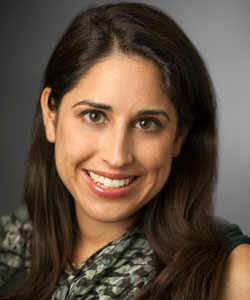 Jane Mendle
Jane Mendle
Cornell University
http://blogs.cornell.edu/mendlelab/
What does your research focus on?
I study a number of facets of adolescent psychopathology, but I’m particularly interested in how different aspects of puberty — its timing and tempo, its early-life antecedents, and the ways that children, peers, and family members perceive and understand it — lay the groundwork for future adjustment. My research tends to be fairly interdisciplinary, integrating developmental psychopathology with behavior genetics, public health, evolutionary psychology, and epidemiology. That’s partly reflective of my interests and partly reflective of the fact that the topic of puberty lends itself to that sort of work, since it’s a transition which spans biological, social, and psychological domains.
What drew you to this line of research and why is it exciting to you?
Puberty has a perplexingly dual nature. It’s a universal experience, which we all pass through on the way to adulthood. But it’s also a well-replicated psychological risk; it’s linked to specific early life adversities and antecedents; and it’s associated with clear shifts in symptom presentation and prevalence of clinical disorders.
Who were/are your mentors or scientific influences?
Throughout my career, I’ve been fortunate to have a cadre of extraordinary mentors, colleagues, and collaborators. Eric Turkheimer and Bob Emery, at the University of Virginia, were exceptional graduate school advisors. They had a remarkable passion for psychological theory, read broadly, and thought critically about everything they read. The way I think about psychology owes a great deal to their influence. I’ve also been privileged in my colleagues — first at the University of Oregon and now at Cornell. It’s a gift to be surrounded by talented scholars; at both schools, I’ve found myself learning from my colleagues on a near daily basis. Within my specific research area, I’ve been inspired by the work of Xiaojia Ge. Ge passed away a few years ago and I was only lucky enough to meet him once, but I re-read his papers frequently and each time, I find myself astonished.
What’s your future research agenda?
Theory and methodology are two passions of mine, and I’ve got a small behemoth of a methodology paper percolating at the moment. I’m also piloting a brief intervention this summer; this is the first time I’ve explored anything like that and I’m excited to see how it unfolds.
What publication are you most proud of?
Mendle, J., Harden, K. P., Brooks-Gunn, J., & Graber, J. A. (2010). Development’s tortoise and hare: Pubertal timing, pubertal tempo, and depressive symptoms in boys and girls. Developmental Psychology, 46, 1341–1353.
When I was first out of graduate school, I found myself thinking a lot about the rate of pubertal maturation, and specifically about how hard it must be to adapt to rapid change compared to more gradual change. I ended up publishing a paper exploring links between extremely rapid maturation and depression. My graduate work employed behavior genetics methodology, and this was the first non-behavior genetics paper I’d written, so it stands out as a project that required completely different skills from what I’d always done as well as a new level of autonomy. Plus: the results are genuinely interesting. In fact, they still intrigue me.
Aprajita Mohanty
Stony Brook University
www.psychology.stonybrook.edu/amohanty-/
What does your research focus on?
My research focuses on how we utilize emotional information to guide our attention and perception, and how we use cognitive strategies to remain goal-focused in the face of emotional distractors. Most studies examining prioritization of emotional stimuli have focused on how we respond faster and more accurately to emotional stimuli. However, prior to stimulus presentation, “top-down” factors like expectation and anticipatory attention can bias perceptual and attentional processes. My research focuses on the often neglected role of expectation and anticipatory attention in prioritization of emotional stimuli both in the visual and olfactory modalities. Combining behavioral and functional MRI (fMRI) techniques, I am examining the role of frontoparietal brain regions (and their interaction with limbic regions) in encoding expectations and integrating top-down spatial and emotional information to guide attention towards the salient targets. I am also exploring these emotion-cognition interactions from the standpoint of individual differences, focusing primarily on anxiety and the schizophrenia spectrum.
What drew you to this line of research and why is it exciting to you?
I have always been intrigued by why emotions get such a bad rap. Most western and eastern schools of philosophy regard emotions as an obstacle to rational thought, and emphasize liberating the mind of feelings and emotions that represent an attachment to the material world. I was surprised to see variations of these viewpoints seep into the affective neuroscience literature which has, at times, advocated a clear divide between emotion and cognition and focused on the relatively “automatic” ways that emotion can capture attention and distort perception. In real life, we use emotional information voluntarily to detect sources of potential threat or reward in a variety of settings, for example, when looking for cars while crossing a street or for a restaurant when hungry. Hence I decided to focus my research on a more voluntary role wherein emotional information is strategically utilized to guide perception and attention. I am excited about this line of research because I believe that not only will this work contribute to a more comprehensive understanding of normal emotion-attention interactions, but also to our understanding of the development and maintenance of anxiety. In general, I believe that mapping the neural circuitry supporting emotion-cognition interactions will help us understand emotional disorders like anxiety and depression, as well as typically “cognitive” disorders like schizophrenia.
Who were/are your mentors or scientific influences?
My first scientific influence came from my father who exposed me to the mysteries of science, specifically, the brain, and the value of research very early in my life. However, I would not have been able to channel my scientific curiosity effectively had it not been for the mentorship of Manas Mandal, my undergraduate research advisor in India. Not only did he provide me the opportunity to conduct research in psychology, which at the time was scarce in India, but also introduced me to emotion research. In graduate school I was fortunate to have outstanding mentors like Greg Miller and Wendy Heller, who taught me to question everything I read and to think creatively. Additionally, Greg Miller taught me how to think about my research in a programmatic manner, to focus on both the process and outcome of research, and to push myself to acquire skills relevant to my research, no matter how hard they seemed. My postdoctoral mentor Marsel Mesulam taught me about brain organization and to think about the potential and the limits of the brain while asking questions that are psychological in nature. Jay Gottfried introduced me to olfaction, an underappreciated modality when it comes to studying emotions and emotion-cognition interactions. Finally, my work has also been influenced by several collaborators and colleagues; in particular, Tobias Egner and Christina Zelano, from whom I learned a lot about basic predictive coding mechanisms in perception, ideas that I am now applying to my work in emotion.
What’s your future research agenda?
In the future, I plan to extend my line of research to investigate overlapping and distinct neural mechanisms involved in top-down and bottom-up modulation of attention and perception by emotional information, as well as how the two interact. A major aim for me is to extend experimental protocols developed from my basic science program to research assessing emotion/cognition interactions in anxiety and the schizophrenia spectrum, with the eventual goal of developing a strong program of translational research in this area. Due to ‘threat schemas’, anxiety may be associated with anticipatory biasing towards threat-related material. In contrast, the attentional system in anxiety maybe especially sensitive to involuntary capture by threat information. I intend to examine the interaction of these automatic and strategic emotion-related processes using both fMRI and more time-sensitive measures like evoked response potentials (ERPs). In my research, I intend to continue using both visual and olfactory modalities due to the unique window each provides into emotional processing. I also plan to examine how enhancing or inhibiting olfactory representations can impact subsequent taste processing, as well the implications for eating behaviors.
What publication are you most proud of?
Mohanty, A., Monti, J., Egner, T. E., & Mesulam, M-M. (2009). Search for a threatening target triggers limbic guidance of spatial attention. Journal of Neuroscience, 29, 10563–10572.
This publication demonstrated that emotional information can guide attention endogenously, and demonstrated the frontoparietal and limbic regions that mediate this guidance. Furthermore, this publication helped me obtain a better understanding of how exactly to study anticipatory biasing processes in emotion research.
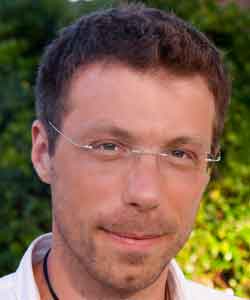 Martin M. Monti
Martin M. Monti
University of California, Los Angeles
http://montilab.psych.ucla.edu
What does your research focus on?
My research focuses on two questions confronting the most characterizing aspects of the human mind: 1) “What is the relationship between language and thought?” and 2) “How and why is consciousness lost and (sometimes) recovered after severe brain injury?” With respect to the first question, I focus on high-level cognition, including arithmetic and music cognition, and logic inference. Does the structure of natural language provide a scaffolding upon which we developed structure-dependent thought in other domains of cognition? With respect to the latter question, I am interested in what aspects of brain structure and function underlie the loss of consciousness in patients in coma and in a vegetative state, and the potential for its restoration.
What drew you to this line of research and why is it exciting to you?
Well, I have a very classical education, so the issue of the relationship between language and other aspects of our mind probably comes from studying ancient philosophy -— and has just stuck. In a form or another, I have been curious about the topic long before I even knew I could make a living studying it. In fact, even as an econ undergraduate, I once wrote a whole essay on the development of language in humans. Perhaps a bit off topic back then, but interesting nonetheless I thought. The topic of consciousness has also long fascinated me, but I must admit that the specific aspect I am working on today is the fruit of a delicate balance between curiosity, philosophy, good timing, and just sheer luck. Exciting? Can it get any more exciting than confronting the two most characterizing aspects of who we are as a species?
Who were/are your mentors or scientific influences?
If I had to pick just one thing, I would say that the greatest luck I’ve had in my career is the exceptional people I’ve learned from. So the little good I’ve done is certainly to blame, in great part, on Prof. Daniel Osherson, my graduate mentor at Princeton University, Prof. Adrian Owen, my mentor during a three-year post doc in Cambridge, UK, and Prof. Lawrence Parsons. This said, the number of thoughtful people I have learned from is much, much larger. For one, Ramon y Cajal’s Advice for a Young Investigator is a quick read I strongly recommend to all junior (and “less junior”) investigators.
What’s your future research agenda?
The overarching questions are still the same, but in the past two years my research has started taking novel directions. In the domain of consciousness I’ve been migrating towards a more quantitative understanding of the link between brain structure/function and consciousness, by measuring structural changes and principles of brain function after severe injury. In the domain of language and thought, after having reported dissociation between the neural basis of language and that of other aspects of structure-dependent thought, I feel I went back to the drawing board to ask a more fundamental question: What information is actually represented within the neural circuitry of language?
What publication are you most proud of?
The next one! Until then:
Monti, M. M., Parsons, L. M., Osherson, D. N. (2012). Thought beyond language: Neural dissociation of arithmetic and natural language. Psychological Science, 23, 914–922.
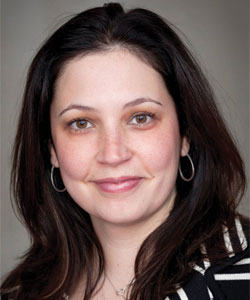 Mary C. Murphy
Mary C. Murphy
The Mind and Identity in Context Lab at Indiana University
www.mindandidentityincontext.com
What does your research focus on?
My research focuses on the science of diversity. My students and I develop and test theories about how people’s social identities and group memberships interact with the contexts they encounter to shape their thoughts, feelings, behaviors, and motivation. I study how the contexts that surround us shape our basic psychological and physiological processes, ultimately informing us about the value of our group memberships. In particular, I study the situational cues that signal to women whether they are valued in science, technology, engineering, and math (STEM) fields with an eye toward uncovering the mechanisms by which cues shape our experiences, and how we might recreate settings to be more inclusive and welcoming to stigmatized individuals. I am also interested in understanding and uncovering barriers to positive intergroup contact. With my collaborators, I am pursuing research that examines the factors that make interracial interaction challenging, particularly as people contend with subtle and blatant racial bias, and what we might do to encourage enjoyable interactions for both majority and minority group members. I want to be part of the growing number of researchers who are studying how we can make diversity work.
What drew you to this line of research and why is it exciting to you?
I was drawn to this research because I have a desire to understand the social psychological factors that produce and reproduce social inequality — whether it is the low number of women in technology jobs or leadership positions, or the achievement and earning gaps between racial and ethnic majority and minority groups. I believe that by understanding the basic mechanisms underlying these differences, we can work to make settings and society more equitable.
Who were/are your mentors or scientific influences?
In graduate school, and still today, I have been extraordinarily lucky to have two superb mentors: Claude Steele and Carol Dweck. Their ideas have shaped both what I study and the approaches I use to investigate my research questions. Claude instilled the value of asking the big, socially relevant questions and then working hard to develop clear, precise methods to investigate them. Sharing the joy he derived from crafting a good paradigm, Claude taught me how much fun research could be. His warmth, kindness, and generosity really shaped the kind of mentor I aim to be for my students. In my last year of graduate school, Carol Dweck joined the Stanford faculty. Working with Carol, I discovered my passion for an incremental mindset and learned the value of challenging myself and pushing myself out of my comfort zone to tackle questions in new ways. Also in graduate school, I collaborated with Hazel Markus, Jennifer Eberhardt, Lee Ross, and Bob Zajonc, who each, in his or her own way, shaped the scholar I have become. I would be remiss if I didn’t mention my dear post doc advisor, Jennifer Richeson, who taught me both by her words and actions about how to balance it all: how to be a top scholar, deeply passionate about the research, while remaining connected to the world. Jennifer and Nicole Shelton’s pioneering work on interracial interactions has set a high bar for what rigorous diversity science can be and has inspired my research on the topic — shaping the methods I use and questions I ask. At my first job at the University of Illinois at Chicago and now, at Indiana University, I have been surrounded by smart, inspiring colleagues including Linda Skitka, Dan Cervone, Bette Bottoms, Jim Sherman, Eliot Smith, Ed Hirt, Anne Krendl, and BJ Rydell. My collaborators, Julie Garcia, Sabrina Zirkel, and Daryl Wout, continue to inspire me. As someone who studies how our environments shape us, I am fortunate to have been surrounded by such excellent scholars.
What’s your future research agenda?
The future is open. While I will continue to examine how contexts shape our basic psychological and physiological processes, what I study is dictated, in part, by the aspects of my research program that excite my students and collaborators. I have been developing a model of identity threat aimed at explaining how and under what conditions majority group members experience threat — examining how these processes are similar to, and differ from, those of minority group members. I am sure that future work will continue to develop that model. Because I am most fulfilled by the collaborative pursuit of research questions, the particular directions I pursue will be a collaborative process.
What publication are you most proud of?
Murphy M. C., Steele, C. M. & Gross, J. J. (2007). Signaling threat: How situational cues affect women in math, science, and engineering settings. Psychological Science, 18, 879–885.
This article stems from some of the first research I conducted in graduate school. I wanted to go beyond performance to examine the downstream consequences of social identity threat. At that time, I was particularly interested in the state of vigilance that identity threat engenders, as well as the physiological consequences of threat. Claude Steele encouraged me to speak with James Gross about collecting physiological data and, together, the three of us worked to make this project successful. It was my first research collaboration and the beginning of my interest in situational cues and how they signal the meaning and value of our social group memberships, so it feels particularly formative to me.
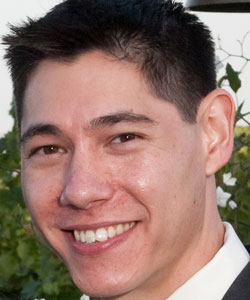
Derek Evan Nee
University of California, Berkeley
http://despolab.berkeley.edu/denee/
What does your research focus on?
My research focuses on elucidating the mechanisms of working memory and cognitive control. These are means to a broader understanding of the higher-level cognitive processes that are emblematic of human intelligence. My approach is to understand the mind through the brain and I leverage neuroimaging to accomplish this.
What drew you to this line of research and why is it exciting to you?
My initial foray into research was in artificial intelligence. I quickly formed the opinion that simulating intelligence would be fostered by understanding how intelligence is implemented in the human mind. So, I turned my attention to human intelligence and have been hooked ever since. Given the central role that intelligence plays in academic and financial success, studying intelligence is a fruitful and exciting enterprise.
Who were/are your mentors or scientific influences?
John Jonides, my graduate advisor, has been a tremendous influence. His intellect, enthusiasm, and unrelenting scientific curiosity have been truly inspirational. David Meyer, who taught a number of my graduate courses, also helped me a great deal with his encyclopedic knowledge and keen eye for details. I am also indebted to my undergraduate mentor, Scott Frey, and post-doctoral mentors Josh Brown and Mark D’Esposito.
What’s your future research agenda?
I have primarily studied the mind through functional MRI. While we have learned a great deal, the methodology has temporal limits that I hope to overcome with combinations of electroencephalography and transcranial magnetic stimulation. A long-term goal is to leverage our mechanistic insights in an applied manner to facilitate development, enhance existing intellectual capacities, and rehabilitate deficiencies related to disease and brain trauma.
What publication are you most proud of?
Nee, D. E., Jonides, J. (2008). Neural correlates of access to short-term memory. Proceedings of the National Academy of Sciences, 105, 14228–14233.
Each publication feels somewhat incomplete since they all seem to raise more questions than they answer! That said, I am partial to the first paper we published in a line of work investigating different representational states in short-term or working memory. When we juggle multiple thoughts in our minds, some of it can be considered foregrounded, some of it backgrounded, and some of it temporarily quiescent to perhaps be returned to at a later time. Our research reveals distinct neural signatures corresponding to these states that link the domains of attention, working memory, and long-term memory.
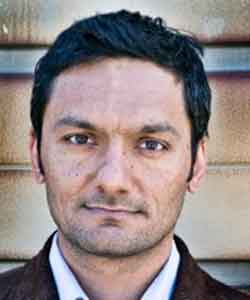 Masi Noor
Masi Noor
Canterbury Christ Church University, United Kingdom
www.canterbury.ac.uk/social-applied-sciences/applied-social-sciences/staff/Masi-Noor/
What does your research focus on?
I am a social psychologist and my work focuses on intergroup relations, including the dynamics of conflict, cooperation, and help between groups. For instance, why do conflicting groups sometimes engage in competition over their victimhood following violent conflicts? How do people of one group decide which, of many, needy groups to donate their money to following humanitarian disasters? I have also studied the role of intergroup relations between smokers and nonsmokers in forming quitting intentions, and I am developing a model to account for the quality of intergroup interactions between the physically disabled and non-disabled. Many of these intergroup dynamics depend on trust; thus, I have also been examining how people recognize behavioral patterns of trust across interpersonal or organizational settings. All of this work is aimed at promoting more harmonious intergroup relations and transforming violent or counterproductive conflict.
What drew you to this line of research and why is it exciting to you?
I am drawn to applied research. Had it not been for my personal experiences of war, immigration, diversity, and racism, as well as being exposed to the generosity and good will of total strangers since my formative years across Afghanistan, Germany, Northern Ireland, and now England, I would have not been pursuing the above lines of research. The research that I conduct is exciting because it aims to capture and understand the potential for the best and worst in humanity. It’s also exciting because due to its applied nature, scholars, students, and non-academic audiences are very quick to engage with my work and provide me with helpful feedback.
Who were/are your mentors or scientific influences?
There is no doubt that I have been hugely influenced by Rupert Brown (former PhD advisor), Isaac Prilleltensky (for initiating the search for a moral compass within psychology), Arie Nadler, and many of my collaborators.
What’s your future research agenda?
I am planning to develop a comprehensive theory that sheds light on the different dimensions and dynamics revolving around the experience of group-based (collective) victimhood. Specifically, I am interested in studying the psychological mechanisms underlying the process of moving away from competition over victimhood towards appreciating the commonality of victimhood across different groups. Aside from just being the fashionable thing to do, once I genuinely understand the relevance and contribution of neuroscience to my area of research, I am interested in how work in that area can broaden my applied social psychological perspective. Irrespective of perspectives, I hope to inspire and recruit more new national and international collaborators through my work. Working with collaborators has been one of the best features of my work, and one that has offered many opportunities to think big and critically.
What publication are you most proud of?
Noor, M., Shnabel, N., Halabi, S., & Nadler, A. (2012). When suffering begets suffering: The psychology of competitive victimhood between adversarial groups in violent conflicts. Personality and Social Psychology Review, 16, 351–374.
This has got to be my work on competitive victimhood which was recently published in Personality and Social Psychology Review. I had little expectation that a concept such as competitive victimhood, which I had picked up from the streets of Kabul and Belfast, would ever make it to such a prestigious outlet. It did and I am still somewhat gob-smacked! Applied is valued after all!
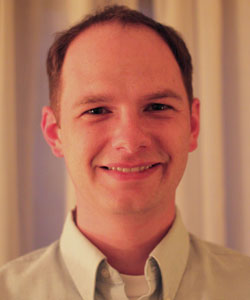 Thomas M. Olino
Thomas M. Olino
University of Pittsburgh
www.dascpitt.org/content/olino-thomas-phd
What does your research focus on?
My primary line of research examines the role of appetitive motivation in the development of unipolar mood disorders using multiple types of methodologies, including, self-reports, behavior, and functional neuroimaging. While there is well-established literature on appetitive motivational deficits in individuals with depression, it is less well known if this pattern of functioning is present before the onset of the disorder. Thus, my work focuses on children and adolescents without a personal history of depression, but who are at high risk for developing depression. If these alterations are identified before the onset of depression, I hope to be able to develop prevention strategies to target this dimension of risk.
What drew you to this line of research and why is it exciting to you?
During my undergraduate studies, I was initially more interested in externalizing behavior problems. However, my first research experience, with Dan Klein, Emily Durbin, and Elizabeth Hayden, focused on observational assessments of temperament. In contrast to my initial expectation, the young children who displayed low levels of positive emotion and minimal enthusiasm for social engagement stood out as being most interesting to me. These children sparked interests in the developmental implications of reduced positive emotion and how emotional style and temperament develop. Regardless of the methodology that I am using to pursue a research question about positive emotion and/or appetitive motivation, I can always visualize the constructs of interest based on the observations of young children.
Who were/are your mentors or scientific influences?
I have been fortunate to have exceptional mentors and role-models. Dan Klein has been a longstanding mentor to me and is the most important influence for my work. During my graduate training, he always had time to discuss scientific projects and broader professional issues. Dan was, and continues to be, very supportive of pursuing research questions that pique my interests. Following graduate school, I began a post doc with Erika Forbes as my primary mentor (with this relationship continuing during my National Institutes of Health Career Development Award). She provided an excellent opportunity to build on my experience of behavioral observations of positive emotions by learning about and incorporating neuroscience perspectives on reward and adolescent development. Our discussions about developmental neuroscience have been particularly valuable for my current and planned work. I hope that I can provide the type of mentoring that I received from Dan and Erika to my own students in the future.
I have also benefitted from informal mentoring from many sources. Emily Durbin and Elizabeth Hayden were excellent role models for how to be productive in graduate school (and beyond). Peter Lewinsohn and John Seeley have been extraordinary role models for navigating and maintaining successful collaborations. I have also benefitted greatly from generous collaborations with Jennifer Silk, Ron Dahl, and Neal Ryan, who have all made important contributions to my early career development — both for empirical and conceptual discussions, as well as practical advice about building a research program from soup to nuts.
What’s your future research agenda?
My future work will focus on the interaction between the development of appetitive motivation and risk for depression: How does appetitive motivation develop from childhood through adolescence, and how do these developmental patterns differ in individuals at high and low risk for depression? Results of these studies may identify when appetitive systems are more malleable to change, which may inform periods of development when prevention strategies may be more successful. In addition to this substantive question, I am also interested in identifying and developing measures that would be appropriate to assess appetitive motivation across childhood and adolescence.
What publication are you most proud of?
Olino, T. M., Yu, L., Klein, D. N., Rohde, P., Seeley, J. R., Pilkonis, P. A., Lewinsohn, P. M. (2012). Measuring depression using item response theory: An examination of three measures of depressive symptomatology. International Journal of Methods in Psychiatric Research, 21, 76–85.
While the primary theme of my work is on risk for depression, I am most proud of a paper that, I think, has practical implications for assessment. Using many statistical indices, the instruments that we use to assess depression (and psychopathology, more generally) are highly similar. In the manuscript, we used item response theory methods to examine how measures of depression severity (two self-report inventories and a diagnostic interview) provide information about different levels of depressive severity. Based on the results, we were able to identify ways in which the measures differ and how these differences have practical implications for assessment.
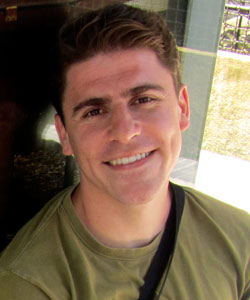
Christopher Y. Olivola
University of Warwick, United Kingdom
https://sites.google.com/site/chrisolivola/
What does your research focus on?
I am generally interested in (human) judgment and decision making. If I had to narrow it down a bit further, I would say I am particularly interested in understanding (e)valuation: How (and why) do we assign value to things? I’ve tried to tackle this question in several ways; for example, by identifying normatively puzzling patterns of valuation, by designing new value-elicitation methods, and by contributing to the ongoing development and testing of a new decision-making theory (Decision by Sampling).
What drew you to this line of research and why is it exciting to you?
My parents were international humanitarian aid workers, so I grew up on four continents, moving between countries every few years. Being fully immersed in so many different cultures probably helped me appreciate the complexities of the human mind. But what really fascinated me was a puzzling psychological tendency that I observed everywhere we went: People’s ability to hold (and even vigorously defend) beliefs that are unsupported by evidence or which blatantly contradict other beliefs that they hold with equal conviction. The field of judgment and decision has long been interested in identifying and understanding these kinds of inconsistencies, which is why I was drawn to it. Another “perk” of this research area is that I get to work with (and occasionally battle) economists (which is not for the faint of heart).
Who were/are your mentors or scientific influences?
I’ve had a string of amazing mentors throughout my academic life. Bill Goldstein and Reid Hastie, who were my undergraduate advisors at the University of Chicago, nurtured my interest in judgment and decision-making research, and provided one of the best mentorship experiences that an overly enthusiastic (yet inexperienced) budding researcher could ask for. I wouldn’t be writing this were it not for their endless support. Then I spent my PhD, at Princeton University, working with the “tremendous trio”: Eldar Shafir, Alex Todorov, and Danny Oppenheimer (one of whom recently graced the pages of this section). Each one of them is a fabulous mentor and super-star academic in his own right, yet their research and mentoring styles are quite different; so I feel as if I got at least three-PhDs’ worth of guidance and wisdom during my time at Princeton. Finally, I owe a great intellectual debt to my postdoctoral advisor, Nick Chater. He has fundamentally changed the way I think about human cognition.
What’s your future research agenda?
I’d like to continue working on human valuation, and maybe try to examine this question in new ways (e.g., I’ve started to work with experimental philosophers). More recently, I’ve become interested in studying tacit coordination (how people manage to find solutions to strategic problems without communicating), which is an enormous field in itself. More than anything, I’ll continue to pursue the questions that I find interesting (which is always hard to predict).
What publication are you most proud of?
Olivola, C. Y., & Sagara, N. (2009). Distributions of observed death tolls govern sensitivity to human fatalities. Proceedings of the National Academy of Sciences of the USA, 106, 22151–22156.
This paper examines some key psychological and environmental factors that drive people’s reactions to humanitarian crises, natural disasters, epidemics, armed conflicts, and other deadly events. It also provides a unifying theoretical account of several well-known phenomena (e.g., the classic “Asian disease” problem). I’m extremely proud of my dissertation work, but I chose this research (a side-project in graduate school) for a few reasons. This was my first publication to come out of a project that was conceived, carried out, and completed without the supervision of a more experienced researcher. It’s got almost everything I like to see in a paper: formal theory, new predictions (generated, tested, and supported), a variety of data collection methods, cool results, even cooler graphs, Greek letters, and even Japanese characters (why not?). And to top if all off, I got to spend six amazing weeks collecting data in India.
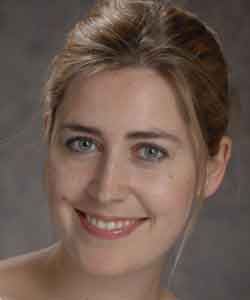 Darby Saxbe
Darby Saxbe
University of Southern California
http://dornsife.usc.edu/nestlab
What does your research focus on?
I am fascinated by how social interconnections, particularly within families, shape our bodies and brains. For example, are spouses’ cortisol levels coordinated? How do early family environments influence youths’ neural and physiological reactivity? Dreaming up lab acronyms may be the academic’s version of doodling your future spouse’s surname in your journal. I settled on NEST — for NeuroEndocrinology of Social Ties — because I work with a lot of nested data, but also because a nest is a nurturing place that families construct together, much as spouses, parents, and children weave a family context out of the moments of everyday life.
What drew you to this line of research and why is it exciting to you?
I have always been curious about what makes families tick. As a graduate student, I worked on the UCLA Center for the Everyday Lives of Families study, an observational study of middle-class families in their natural habitats, aka their homes. For example, I looked at how spouses’ housework time was linked with their cortisol levels at the end of the day. At the time, my interest in this topic was mostly academic, but then I got married and had two kids of my own and now I’m all too well acquainted with the challenges of maintaining a household.
Who were/are your mentors or scientific influences?
I have been really lucky on this front: I have had wonderful mentors in my corner. In particular, my graduate mentor Rena Repetti and my postdoctoral mentor Gayla Margolin have influenced not just the way I think about research, but also the way I hope to run my lab and my career. Both women have balanced work and family life while managing to be productive, influential scholars. Other inspiring mentors include Shelley Taylor, Tom Bradbury, Andy Christensen, and Ted Robles at UCLA. More recently, Mary Helen Immordino-Yang and Jonas Kaplan, at the University of Southern California, helped me dive into functional MRI (fMRI ) research without too many mishaps. More broadly, I’ve been wowed by the work of Megan Gunnar, Emma Adam, Janice Kiecolt-Glaser, Bruce Ellis, Martie Haselton, Naomi Eisenberger, and Ruth Feldman, among many others.
What’s your future research agenda?
I’m currently working with data from an fMRI study in which adolescents respond to video clips of themselves and their parents. I’m looking at how individual differences, like a history of family aggression, are linked with patterns of activation in the “mentalizing network” and other areas linked with social processing. Next, I’m hoping to pilot a transition-to-parenthood study in which I follow couples from pregnancy into the postpartum period. This seems like fertile ground (ha, ha) to look at dyadic, and then triadic, coordination of hormone levels, as well as the neural workings of the “parenting brain.”
What publication are you most proud of?
Saxbe, D. & Repetti, R. L. (2010). For better or worse? Coregulation of couples’ cortisol levels and mood states. Journal of Personality and Social Psychology, 98, 92–103.
This was originally a dissertation project, and we found that married couples showed correlations in their cortisol and negative mood levels over several days, even after controlling for sampling time. More dissatisfied couples showed stronger coordination. This paper was a challenge: I had to learn how to use dyadic multilevel modeling, for one thing, and it went through three rounds of detailed revisions before it got accepted to the Journal of Personality and Social Psychology . But it was exciting because it felt like we were answering a “no duh” question — whether spouses show similar cortisol levels — that no one had exactly answered before. Plus, the results have led me into new projects.
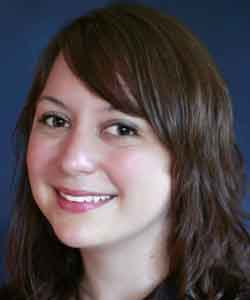
Leah H. Somerville
Harvard University
http://andl.wjh.harvard.edu
What does your research focus on?
My research focuses on the study of human emotion, especially factors that explain variability in emotional responding across people, in social and nonsocial contexts, and across the developmental course. In the last few years, I’ve focused on asking how brain development during the second decade of life relates to common changes in emotional processes and social cognition in adolescents. To inform these issues, my work combines behavioral, psychophysiological and brain imaging approaches.
What drew you to this line of research and why is it exciting to you?
During my senior year in college, I worked in two labs that researched the brain bases of emotion perception and regulation, and also volunteered at a teen crisis center. The lab experiences inspired me to pursue graduate training in cognitive and affective neuroscience, but adolescence was a phase of the lifespan that continued to fascinate me. So, in my post doc I sought out the opportunity to incorporate a developmental perspective into the study of emotion. Studying emotion is exciting to me at both intellectual and pragmatic levels. Intellectually, it’s a neat puzzle — how can one emotional event lead to hugely variable reactions across time, situation, and person? But I’m drawn to this puzzle for pragmatic reasons because it gives us clues to the neurobiological mechanisms of resilience, emotion dysregulation, and risk for psychopathology
Who were/are your mentors or scientific influences?
I could not be more thankful for the mentors who have supported my career in various ways! I would not be where I am without the mentorship of B.J. Casey, Richie Davidson, Todd Heatherton, Tom Johnstone, Ned Kalin, Bill Kelley, Hackjin Kim, Steve Petersen, John Walkup, Paul Whalen, and many others.I’m also thankful for the support of so many of my colleagues, past and present, and for the advice, support, and scientific inspiration provided by my scientist peers, collaborators, and friends scattered across the globe.
What’s your future research agenda?
My lab is currently focused on adolescent brain and socioemotional development, but we are planning to incorporate some new approaches to this issue. We’re considering ways to drill down to understand emotional processes more fundamentally, by targeting constituent processes that contribute to emotional reactivity and regulation. We‘re also expanding our scope to draw clearer linkages between laboratory measures and real-world behavior such as emotionally guided decision-making, and risk for mood and anxiety disorders.
What publication are you most proud of?
Somerville, L. H., Jones, R. M., & Casey, B. J. (2010). A time of change: Behavioral and neural correlates of adolescent sensitivity to appetitive and aversive environmental cues. Brain and Cognition, 72, 124–133.
When I joined B.J. Casey’s lab as a post doc, my first task was to immerse myself in the literature on emotion and adolescent development. This paper was the result of that several-months-long effort. At the time, I didn’t know if anyone would read or appreciate this paper, but I’ve been pleasantly surprised by the interest it’s received.
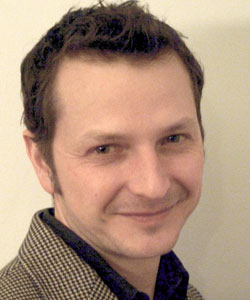 R. Nathan Spreng
R. Nathan Spreng
Cornell University
http://lbc.human.cornell.edu/
What does your research focus on?
My research examines large-scale brain network dynamics and their role in cognition. I am actively involved in the development and implementation of multivariate and network-based statistical approaches to assess brain activity. In doing so, I hope to better understand the properties of the brain networks underlying complex cognitive processes as they change across the lifespan. Currently, I am investigating the link between autobiography and imagination, how we conceive of the future, and successful navigation of the social world. These investigations extend to the related processes of memory, cognitive control, and social cognition, and the interacting brain networks that support them.
What drew you to this line of research and why is it exciting to you?
During my undergrad at Sarah Lawrence College, I read Endel Tulving’s 1985 paper “Memory and Consciousness”. I was intrigued by the story of a hippocampal amnesiac: by virtue of having lost his ability to remember the past, he was also unable to think about the future. Why are the past and the future so interconnected? I pursued this question during my graduate studies at the University of Toronto. In 2007, mid-way through my studies, Randy Buckner published “Self Projection and the Brain”. The study links remembering with simulating the future and social reasoning, and further suggested that the default network supports these cognitive processes. I cannot emphasize enough how important this paper was for me. In grad school, I had often discussed with a fellow graduate student, Raymond Mar, his interest in narrative fiction’s relationship to the simulation of social experience. As a result of reading Buckner’s paper, Raymond and I realized that our work was far more aligned than we knew. We have since published numerous papers together exploring the relationship between memory and social cognition. I find pursuing how cognitive processes interact across spatially distributed brain networks very exciting. I love the opportunity to explore the structure of data. Analysis is really my favorite part of research, because this is where the discoveries are made in real time. In a well-designed experiment with quality data, it is within the analysis that you actually discover something new for the first time that no one else has seen before.
Who were/are your mentors or scientific influences?
From my years as an undergraduate at Sarah Lawrence College, I am grateful to Elizabeth Johnston and Gina Philogene. They both introduced me to the richness of psychology as a science through seminars, exposure to primary source material, and conversation. I am also indebted to Brian Levine, Cheryl Grady and Dan Schacter for their amazing support. They all gave me the freedom to pursue challenging and high-risk research questions. Doing graduate work and a post doc at the Rotman Research Institute was a great experience. There, I was introduced to the idea that cognition is an emergent property of interacting brain regions, and gained invaluable experience in multivariate tools available to explore brain networks. I was very fortunate to then start a second post doc at Harvard and work with Dan Schacter, whose book Searching for Memory I read as an undergrad. It was definitely intimidating at first to work with an academic hero. Randy Buckner had recently relocated to Harvard and shared lab meetings with Dan. Randy came with a lot of exciting ideas and tools to examine resting-state functional connectivity MRI. In this environment, with such great resources, I was able to do some very exciting and creative work. I also came to learn how much of a social endeavor science really is. I am very grateful for my collaborators and colleagues, whose ideas and interests constantly stimulate my own work.
What’s your future research agenda?
I have two closely related lines of research:
a) What are the cognitive functions supported by the default network? The default network seems to process personally salient information, such as memories and social information. I am continuing to examine how these processes interact, but I am also interested in how they change across the lifespan.
b) How does the default network interact with other large-scale brain networks? There have been great strides in delineating large-scale functional networks. However, as we have become more precise in terms of defining functional units, it is important to also understand how information moves between distributed neural systems.
What publication are you most proud of?
Spreng, R. N., Stevens, W. D., Chamberlain, J., Gilmore, A. W. & Schacter, D.L. (2010). Default network activity, coupled with the frontoparietal control network, supports goal-directed cognition. NeuroImage, 53, 303–317.
At this stage, I am most proud of my 2010 NeuroImage paper. Methodologically, this project was extremely challenging, drawing upon resting-state functional connectivity MRI and multivariate analysis to characterize large-scale brain networks and task-dependent changes in network interactivity. The results provide robust and novel evidence for the default network’s involvement in goal-oriented cognition. This paper also sets the stage for a number of ongoing investigations into how the default network gains access to executive regions, such as lateral prefrontal cortex, for personally salient, goal-directed information processing.
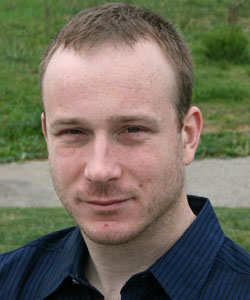 Benjamin Storm
Benjamin Storm
University of California, Santa Cruz
http://people.ucsc.edu/~bcstorm/research.html
What does your research focus on?
My research focuses broadly on human memory with a special focus on the causes and consequences of forgetting. Although forgetting may seem like a failure of memory, in many instances it is essential for the efficient and adaptive functioning of memory. Some of my research has shown that forgetting is critical for resolving competition during retrieval, overcoming fixation in creative problem solving, updating autobiographical memory, and facilitating new learning.
What drew you to this line of research and why is it exciting to you?
I didn’t know that I wanted to study memory until I started working with my graduate advisors, Robert Bjork and Elizabeth Bjork. I was fascinated by the idea that forgetting could be goal-directed and that there are mechanisms specifically designed to cause forgetting. I believe that developing a more complete understanding of how we learn, think, and remember requires a more complete understanding of how and why we forget.
Who were/are your mentors or scientific influences?
I am deeply indebted to the Bjorks. They have been amazing role models — as researchers, as teachers, and more generally as people — and I will feel forever fortunate that I somehow found my way into their lab. Participating in cogfog was also a valuable experience. It exposed me to an incredible group of scholars and helped instill a more careful appreciation of methodological rigor, a love for predicting and interpreting data, and the ability to present to a somewhat unruly, though always well-meaning, audience. Over the years I have also benefited from the wisdom of many other colleagues, mentors, and friends (e.g., Michael Anderson, Aaron Benjamin, Alan Castel, Arturo Hernandez, Barbara Knowlton, Steve Smith, Tom Wickens, and Jenny Wiley).
What’s your future research agenda?
I plan to continue to explore the causes and consequences of forgetting in human memory. I am particularly interested in examining the functions of memory in context and moving beyond the usual word-list paradigms.
What publication are you most proud of?
Storm, B. C., & Angello, G. (2010). Overcoming fixation: Creative problem solving and retrieval-induced forgetting. Psychological Science, 21, 1263–1265.
I am equally proud of all my publications! For current purposes, however, I’d have to say Storm and Angello (2010). First, it is very short, so everyone can read it in just a few minutes. Second, the editor requested that I drop two experiments, which fortuitously became the foundation of a separate paper in the Journal of Experimental Psychology: Learning, Memory, and Cognition. Third, the study found new and important support for the inhibitory account of retrieval-induced forgetting. Fourth, it opened up a whole new line of research exploring the role of inhibition and forgetting in creative cognition.
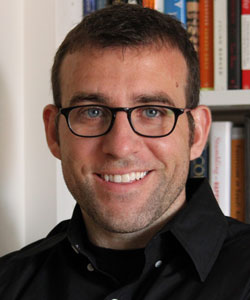 Piercarlo Valdesolo
Piercarlo Valdesolo
Claremont McKenna College
cmcmeatlab.com
What does your research focus on?
I study the influence of discrete emotions on social and moral judgment, with a particular interest in the adaptive importance of these states. Usually this involves constructing realistic social situations in the lab meant to elicit a particular emotional state from participants, and then measuring its effects on phenomena such as trust, cooperation, altruism, blame, or punishment.
What drew you to this line of research and why is it exciting to you?
I fell into this topic serendipitously. Shortly after a distressing college breakup, I was assigned to read a series of articles authored by David Buss on the evolutionary function of jealousy for a biology class. Let’s just say the articles spoke to my experience. In fact, thinking about different theories of this emotional state turned out to be a pretty good way of dealing with its effects, and soon enough I had decided to write my senior thesis on the topic. In so doing I became fascinated with the idea that emotions, as opposed to impeding adaptive decision-making as common sense tells us, are absolutely essential for successful social living. After graduating, I entered the PhD program in social and personality psychology at Northeastern University, where I was fortunate enough to pursue this interest as a part of David DeSteno’s Social Emotions Group.
Who were/are your mentors or scientific influences?
My professors at Amherst College were the first to get me excited about the field, particularly my thesis advisor, Rose Olver, and social psychology professor, Catherine Sanderson. But my most formative and valued professional relationship is with my graduate school advisor, David DeSteno. Dave is my model for what a researcher, collaborator, teacher, and friend should be. I can’t imagine what my professional life would look like without him, though it surely would be far less successful and a lot less fun. Finally, my fantastic colleagues at Claremont McKenna College are constant reminders of the importance of perspective in the workplace. That I have not yet pulled out all my hair is a testament to their calming presence.
What’s your future research agenda?
Most of my research has focused on morality at the interpersonal level, but recently I’ve become interested in how the processes underlying moral decisions and behavior play out at the level of institutions and organizations. I hope to apply the basic science I’ve been conducting over the years to the understanding of social issues such as institutional corruption. For example, how do institutions build and lose public trust? What are the organizational structures in which individuals are likely to transgress or blow the whistle? Under what conditions are institutions perceived to be morally responsible or blameworthy entities?
What publication are you most proud of?
Valdesolo, P., & DeSteno, D. (2008). The duality of virtue: Deconstructing the moral hypocrite. Journal of Experimental Social Psychology, 44, 1334–1338.
In addition to making use of a particularly cool experimental paradigm, this study fits squarely within a now growing body of literature emphasizing our intuitive sense of equity, and arguing against intuitive self-interest.

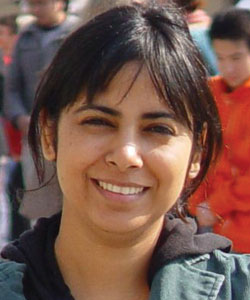




APS regularly opens certain online articles for discussion on our website. Effective February 2021, you must be a logged-in APS member to post comments. By posting a comment, you agree to our Community Guidelines and the display of your profile information, including your name and affiliation. Any opinions, findings, conclusions, or recommendations present in article comments are those of the writers and do not necessarily reflect the views of APS or the article’s author. For more information, please see our Community Guidelines.
Please login with your APS account to comment.